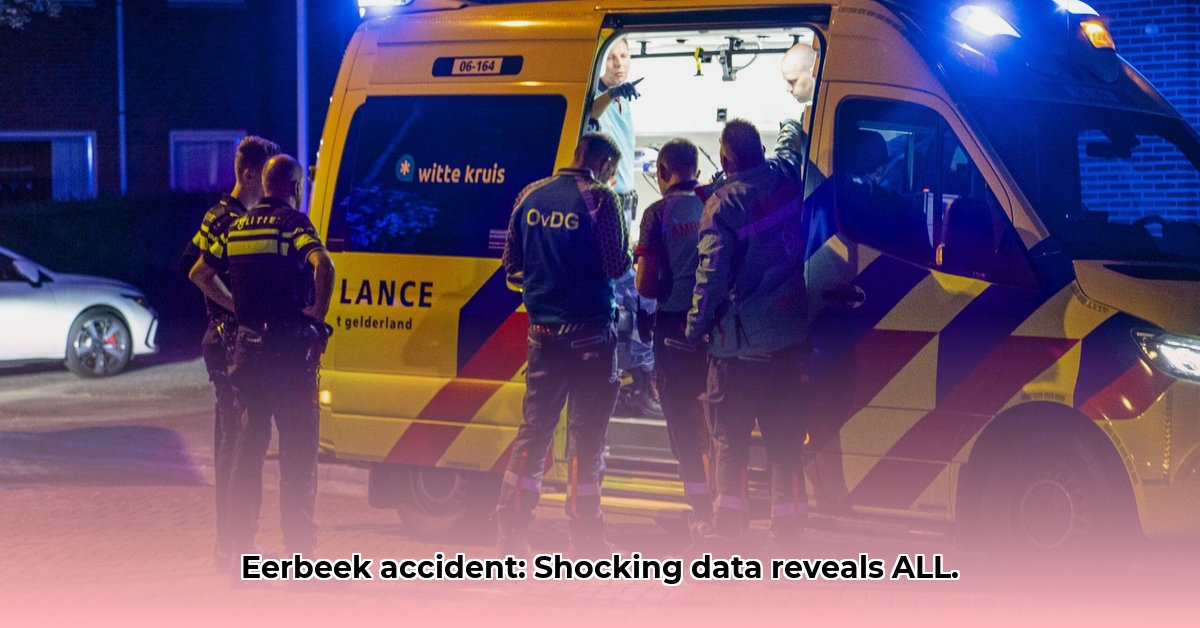
Improving Emergency Response in Ongeval Eerbeek: A Data-Driven Approach
The emergency response system in Ongeval Eerbeek, while seemingly functional, reveals significant areas for improvement upon closer examination of the data. This report identifies key shortcomings, offers a data-driven analysis, and proposes a practical, phased implementation plan to enhance response times, resource allocation, and overall system resilience. The ultimate goal is to ensure faster, more effective assistance for all residents.
The Information Gap: A Critical Deficiency
Currently, the system suffers from a critical lack of comprehensive data. While some incident records exist, they lack crucial details. How can we properly assess response times without consistent, standardised data on incident type, location accuracy, and resource deployment? This fragmented information hinders accurate evaluation, making it difficult to identify recurring problems, high-risk areas, or inefficient resource use. It's like attempting to navigate a city without a proper map—inefficient and potentially dangerous. Isn't it crucial to have a complete picture to truly understand our response capabilities?
A Phased Approach to Transformation: Practical Steps for Improvement
Effective improvement requires a collaborative effort from the municipality of Brummen, emergency services (police, ambulance, and fire), and the wider community. We propose a two-phased approach:
Phase 1: Quick Wins (0-1 Year)
Standardised Data Collection (0-6 months): Immediate implementation of unified data collection procedures across all emergency services. This includes adopting standardised forms and reporting methods, enabling comprehensive data comparison and analysis. Target: 95% data consistency across all services within six months.
Enhanced Information Sharing (6-12 months): Establishment of effective information-sharing protocols among emergency services, enabling a holistic view of each incident and facilitating coordinated responses. Target: Reduction in handoff time between services by at least 20%.
Public Awareness Campaign (concurrent): Launch a targeted public awareness campaign to enhance community understanding of emergency reporting procedures. This initiative aims to ensure correct and efficient reporting, improving the accuracy and timeliness of emergency responses. Target: 15% increase in accurate first-call reports within one year.
Phase 2: Long-Term Vision (3-5 Years)
Investment in Smart Technology (Years 1-3): Strategic investment in advanced data analytics tools to enable predictive modelling of potential emergencies and improved resource allocation. This includes leveraging historical data and real-time information to anticipate high-risk situations. Target: 10% reduction in response times to predicted high-risk areas.
Comprehensive Staff Training (Years 1-5): Ongoing training programmes for all emergency response personnel, including dispatchers and support staff, to ensure effective utilization of new technologies and systems. This training should focus on data analysis interpretation and actionable insights. Target: 90% staff competency in using new systems within two years.
Enhanced Community Engagement (ongoing): The establishment of robust community engagement initiatives to foster collaboration in identifying and managing local risks. This includes community workshops and feedback mechanisms to build preparedness and resilience. Target: 20% increase in community participation in risk mitigation initiatives within three years.
Risk Assessment Matrix: Identifying and Addressing Potential Challenges
While a comprehensive risk assessment requires further data, preliminary concerns include:
| Risk Factor | Likelihood | Impact | Overall Risk | Mitigation Strategy |
|---|---|---|---|---|
| Incomplete data hindering effective response | High | High | Very High | Standardised data collection and data quality improvement. |
| Resource misallocation | Medium | Medium | Medium | Predictive modelling and dynamic resource allocation. |
| Public misunderstanding of reporting | Medium | Medium | Medium | Targeted community education and awareness campaign. |
| Data breaches | Low | Very High | High | Stringent adherence to data protection regulations (AVG). |
Data Protection and Compliance: Prioritising Privacy
Adherence to Dutch data protection laws (AVG) is paramount. All data handling must prioritise resident privacy, employing secure storage, anonymisation techniques, and strict regulatory compliance. This is non-negotiable.
Conclusion: A Path Towards Enhanced Emergency Preparedness
This report highlights the urgent need for systemic improvements to Ongeval Eerbeek's emergency response system. Through a collaborative, data-driven approach incorporating the proposed phases, we can build a more efficient, effective, and resilient system that prioritises community safety and well-being. Continuous monitoring, evaluation, and adaptation are critical to achieving long-term success.